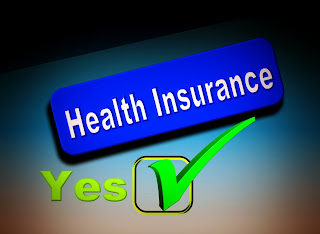INCOME PROTECTION INSURANCE | HOW CAN YOU PROTECT YOUR INCOME
Insurance is a way of ensuring risk management and possible ways of curbing risk to save finance and more also serves as an instrument to save you for unforeseen events either long or short term. Your income is what actually should be preserve in order to meet your needs both present and future or even after death for your beneficiary/nominee. Income protection Insurance is an insurance policy that covers you for your inability to work, this policy does not over you after death but a separate policy like the life insurance policy covers you for death.
Income protection insurance is a policy that pays benefits to policyholders who are unable to work due to the accident or illness, this policy was formerly called the Permanent Health Insurance (PHI). There are certain concepts we need to understand in the income protection insurance and these concepts will best help us identify how well we can save and protect our finance. We need to understand how this concepts of income protection insurance works and then we should also know what we really want out of it. These concepts may include:
1) Incapacity
2) Benefit Limits
3) Deferred Period
4) Proportionate Benefit
5) Free Limit
1 Incapacity: Incapacity here means inability or been incapacitated and there are certain reasons why incapacity is regarded as one of the concepts of income protection insurance:
A Activities of Daily Living( ADL): This policy defines your functions and duties so that when you are unable to perform these functions or duties due to illness or accident it can protect you from that.
B Any Occupation: This is when the policyholder is unable to perform any occupation at all due to illness or accident
C Suited Occupation: This is when the policyholder is unable to perform duties assigned to them due to illness or accident.
D Own occupation: The policy covers a policyholder if he/she is unable to perform their own occupation and definitely not occupied by another job.
2 Benefit Limits: There are usually a stipulated percentage that is been payable to the policyholder from its normal earnings. In some cases it is at about 70% but could be lesser or higher
3 Deferred Period: This is the period between a valid claim and when a commencement of benefits is payable and should be payable.
4 Proportionate Benefit: This is to encourage the policyholder to return to their work and in most cases decides to offer reduced benefit if the policyholder decides to take up a lower paying job after recovering from illness.
5 Free Limit: The income Protection Insurance will be valid only if the policyholder lives in a particular area that is stipulated in the policy. Most policies allows for temporary residence outside areas such as UK, USA, and Western Europe.
TYPES OF INCOME PROTECTION INSURANCE
There are basically three types of IPI and they are:
1 Agreed Value
2 Indemnity Value
3 Loss of Earnings
1 Agreed Value: This type of Income protection Insurance is usually proven upon taking up the policy. There is a fixed amount you will receive regardless of the increase or decrease in your income. The premium you pay for in this type of policy can be much higher by 20-25% than the indemnity value which we are going to discuss next.
In this policy, you can summit a proof of income through an application before or after your policy begins and it assures you of a monthly benefit thus if you cannot provide a proof of your income application before or at the period of your claim, the amount of the monthly payment that would be relieved may likely reduce.
2 Indemnity Value: In this type of income protection Insurance, the payment of your benefit is based on your declaration at the initial time of taking up the policy that is you will be asked to declare your salary when taking up the policy and the benefit will be paid on that which you have declared. The amount of benefit paid to you by the insurance company will be 75% lesser of your pre-disability income or the amount insured in your policy.
Pre-disability income here means the income in you earned over the last 12 months in a specific period of time. Under this kind of policy, financial checks are mostly required and essential when you file out a claim and if this claim was ensured by you, you could reduce the amount of benefits that is to be paid if you have recently earned less before the policy began.
3 Loss of Earnings: This type of IPI is similar to the indemnity value/protection where the benefits to be received will be based on your actual income rather than the income at the time of making a claim. For example if your salary or earnings is $80,000 a year and you were injured to the extent you decided to take a break off work, your income shortfall will still be $80,000 but if you were still able to work part time, your income might reduce a little by $30,000 which means that your benefit is based on a shortfall of $50,000 rather your actual benefit of $80,000.
INCOME PROTECTION INSURANCE FOR SELF EMPLOYED
Income Protection Insurance for self employed is a policy that guarantees payment if you are unable to work due to an injury or illness. This policy pays a monthly income until you are fit and able to return to your work or for a stipulated period of time usually 12-24 months. The benefit of this IPI for self employed is that:
1 It puts you n a better position to over your expenses, manage debts, and taking care of your loved ones when you are unable to do so.
2 It give you an assurance that things are going to be better by making you think lesser of how you are going to pay your bills, debts and other expenses and make you focus on how to get back to your health position once again.
PREMIUMS OFFERED
When choosing a policy most especially the life insurance policy, there will be an option to choose between a level premium and a stepped premium.
1 Level Premium: This kind of premium is relatively expensive at the beginning of acquisition but consistent.
2 Stepped Premium: This kind of premium increases as you grow older but is cheaper at the beginning unlike the level premium however it is important to consider rising cost over time.
LONG TERM INSURANCE PROTECTION
A long term insurance protection plan usually covers an individual up to the age he/she decides to retire from work. Long term protection also covers serious illness and incidents, strokes and heart attacks or where you are permanently unable to work. This long term plan feature things like:
A It covers you until you retire
B More costly than the short term plan
C The potential payout is usually increased
E Greater certainty over premium
F More severe conditions are usually covered
SHORT TERM INSURANCE PROTECTION
Short term income protection products are likely underwritten while others which would help to speed up the acceptance and application process are of short term. Unlike the long term plan which is for a longer period of time even up to the death of the policyholder, the short term plan are for short term illness or injuries that causes inability to work.
This means that even if a consumer had no proper mediation or has seen no doctors for a given period of time, the insurer (insurance company) may still try to exclude the claim incase there are certain pre-existing condition that the insurance company had to beware of. So it is worth it if the consumer knows exactly what they are to be covered for and this should include:
1 Cheap rate: It should be cheaper than the long term plan
2 Unlike the long term which is generally underwritten, the short term is not underwritten
3 More conditions are excluded
4 More flexibility
5 Premium renewal is not certain
IS INCOME PROTECTION INSURANCE WORTH IT??
Having known what Income Protection is all about which was included in this article the definition, types, benefits, premium offered and other tips, you should now be considering if income protection insurance is really worth your money, probably you haven’t thought of that, we would be illustrating some points to show if it is really worth taking up an income protection insurance or not….
Income protection insurance assures you of payment of benefit in the event which you cannot work to earn your normal income due to illness or injuries. Most people prefer insuring their property like their cars against accident but in case you didn’t insure your car (uninsured car) and it eventually gets destroyed, it might take a very long time to recover financially.
However, have you imagined losing your income for an extended period of time, yea, you might recover financially because your finance could take care of you till you recover from such illness and the money spent could be recovered in a shorter period of time due to your savings, annual leave, family help, or sick leave but what if you were involved in a fatal car accident and couldn’t work for a longer period of time let’s say 6-7 years, it is very much likely that such event could put you in a big financial debt then this is where IPI long term plan would help you recover fast.
Another reason is that Income protection Insurance is worth it is because life could turn to the negative side un expectedly, suppose you are working in a paid position, this policy protects you and your loved ones against any financial impact of losing your income when you get ill or involved in an accident which we do not pry or hope for.
IN QUOTE:
“The Association of British Insurers report announced that protection insurers are helping more families than ever before, while the financial conduct Authority believes that “millions would ideally have some form of income protection”
The Association of British Insurers
So having outlined some of the benefits of income protection insurance, I can say that the IPI is really worth it especially if you are self employed or in a paid organization.
So what do you think about this? Please kindly use the comment section


















Search This Blog
Socialize